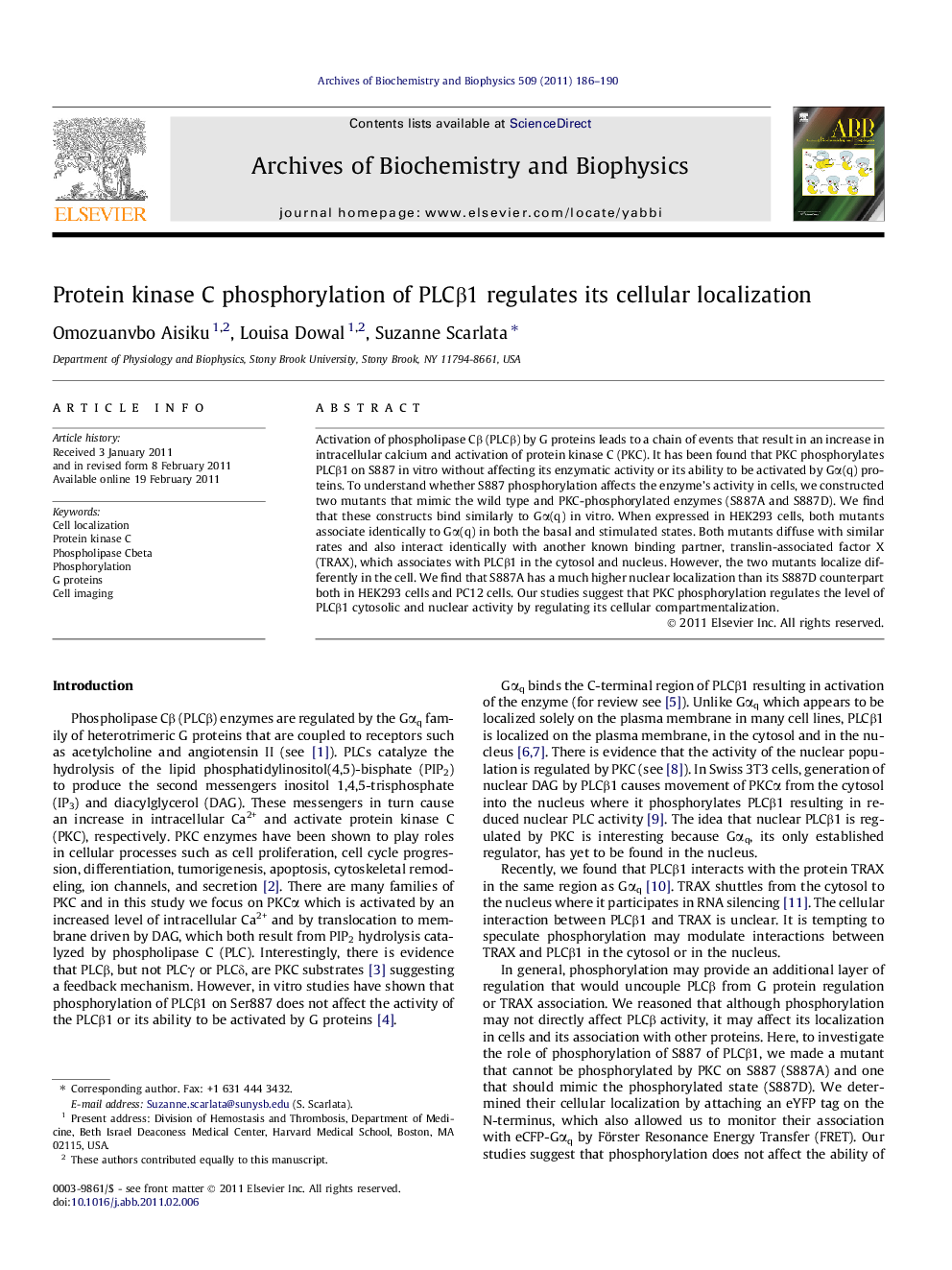| کد مقاله | کد نشریه | سال انتشار | مقاله انگلیسی | نسخه تمام متن |
|---|---|---|---|---|
| 1925758 | 1536413 | 2011 | 5 صفحه PDF | دانلود رایگان |

Activation of phospholipase Cβ (PLCβ) by G proteins leads to a chain of events that result in an increase in intracellular calcium and activation of protein kinase C (PKC). It has been found that PKC phosphorylates PLCβ1 on S887 in vitro without affecting its enzymatic activity or its ability to be activated by Gα(q) proteins. To understand whether S887 phosphorylation affects the enzyme’s activity in cells, we constructed two mutants that mimic the wild type and PKC-phosphorylated enzymes (S887A and S887D). We find that these constructs bind similarly to Gα(q) in vitro. When expressed in HEK293 cells, both mutants associate identically to Gα(q) in both the basal and stimulated states. Both mutants diffuse with similar rates and also interact identically with another known binding partner, translin-associated factor X (TRAX), which associates with PLCβ1 in the cytosol and nucleus. However, the two mutants localize differently in the cell. We find that S887A has a much higher nuclear localization than its S887D counterpart both in HEK293 cells and PC12 cells. Our studies suggest that PKC phosphorylation regulates the level of PLCβ1 cytosolic and nuclear activity by regulating its cellular compartmentalization.
Figure optionsDownload high-quality image (66 K)Download as PowerPoint slideResearch highlights
► PKC phosphorylation of PLCβ1 does not affect association to Gαq invitro or in cells.
► PKC phosphorylation does not affect its cytosolic or nuclear association with TRAX.
► PKC phosphorylation of PLCb1 reduces its nuclear localization.
Journal: Archives of Biochemistry and Biophysics - Volume 509, Issue 2, 15 May 2011, Pages 186–190